Be it renown brands like Nike, Adidas, Stride-rite, Crocs, Plae or Geox – sizes vary from brand to brand. Some run smaller, other run larger. Use shoe sizes only as an approximate, especially for smaller kids.
The safest way to find the perfectly fitting shoe for you or your child is by using the actual foot measurement. But how to measure your or your kids feet properly? And how to measure baby feet? Below you may find all the answers.
What do you want to measure?
How to Measure Your Shoe Size and Width at Home
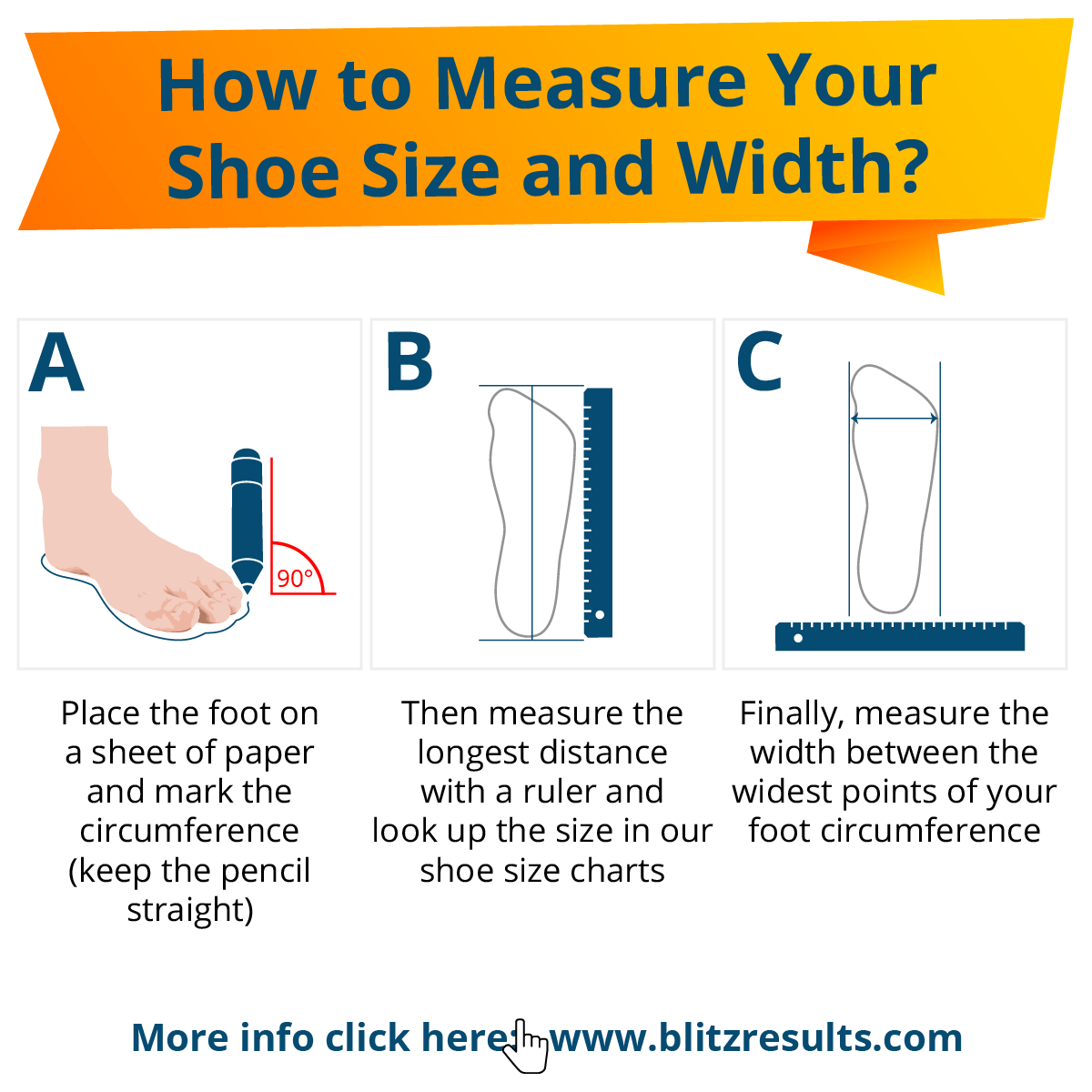
- The best time to measure your feet is in the afternoon or evening, when your feet have flattened out. If you measure your feet in the morning, when they are smaller, you might buy the wrong-sized shoes
- Put your feet on a piece of paper. Stick the paper to the floor with some tape so that it doesn’t slip.
- Draw around your foot with a pen, holding the pen straight up (at a 90° angle to the paper).
- Measure the longest distance from the heel to the tip of your longest toe.
- Enter the measurement into the calculator or compare it with the respective shoe size conversion chart.
- Pro tip: If one of your shoes is always too tight, measure both feet and then use the length of the longest foot to calculate the correct size for your footwear. If the two lengths vary a lot, you should consider getting your shoes specially made or using special insoles. For instructions how to measure children´s feet, please see here.
How to Measure Kids Feet
- Measure feet in the afternoon, as they will become wider and longer during the day.
- Your child should be standing, instead of sitting, during measurements, as this also affects the size of their feet.
- To measure: place the foot on a tape measure and measure it from the heel to the tip of the longest toe. This measurement is your child’s shoe size. Look up size in child foot measure chart to get the right shoe size.
- Check for measurements every two months – because children’s feet grow incredibly fast!
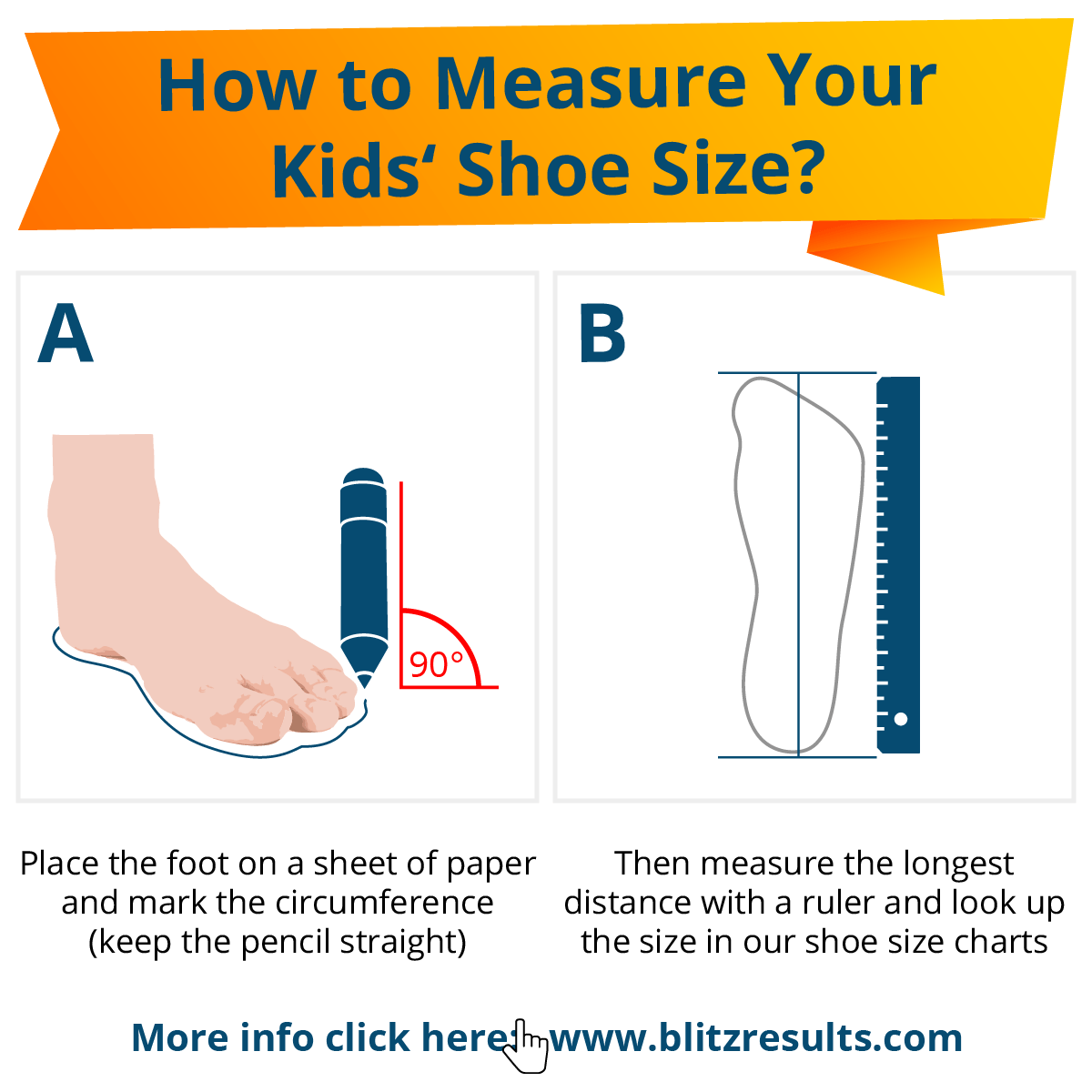
Always measure both feet! Differences of half an inch in length are quite common. Half an inch corresponds to a whole shoe size and must be taken into consideration when buying!
Always make your shoe purchases according to the longest foot!
How to Measure Baby Shoe Sizes

There are many different ways to measure the shoe size of your little kid.
Some are more simple than others and require lesser materials.
A Brannock device, the standard tool used to measure the foot size, is not suitable for babies.
Some size converters are also available online but nothing beats actually letting your kid fit the correct shoe before buying, but for those that want to do it at the comfort of their own home, here are the two best ways:
Measuring your Baby’s Feet with a Tape Measure
- Prepare the tape measure, paper, and pen for noting the measurements.
- Let your baby lie on floor and measure.
- Start measuring your baby’s feet size by putting the tape measure on both the length and width of child’s foot. Repeat the process 2-3 times to make sure you are getting the most accurate approximate size.
- Write down the measurements (use inches for US sizes).
How to Measure Toddler Shoe Size Using a 1:1 Shoe Sizing Guide Scale
- Download a printable baby shoe size guide or size converter and set the printing scale to 100%. This will ensure that the size guide has the same ratio as the child’s foot.
- Follow the specific instruction provided in the shoe size chart or guide that you printed. Each size guide tends to have different methods but in general, you’ll just need to let your baby step on the guide with the biggest toe aligned with the toe in the size guide.
- Write down the measurements. Do this for both feet.
Printable Shoe Sizing Guide for Babies and Kids
How do I know if a shoe fits?
Remove the footbed: place it on the floor and put your foot on top of it. You will be amazed! Why? Because it provides first indications of how well the shoe fits in length. This means that the width of the foot cannot be deduced one to one, as the interior of the shoes is usually wider than the footbed.
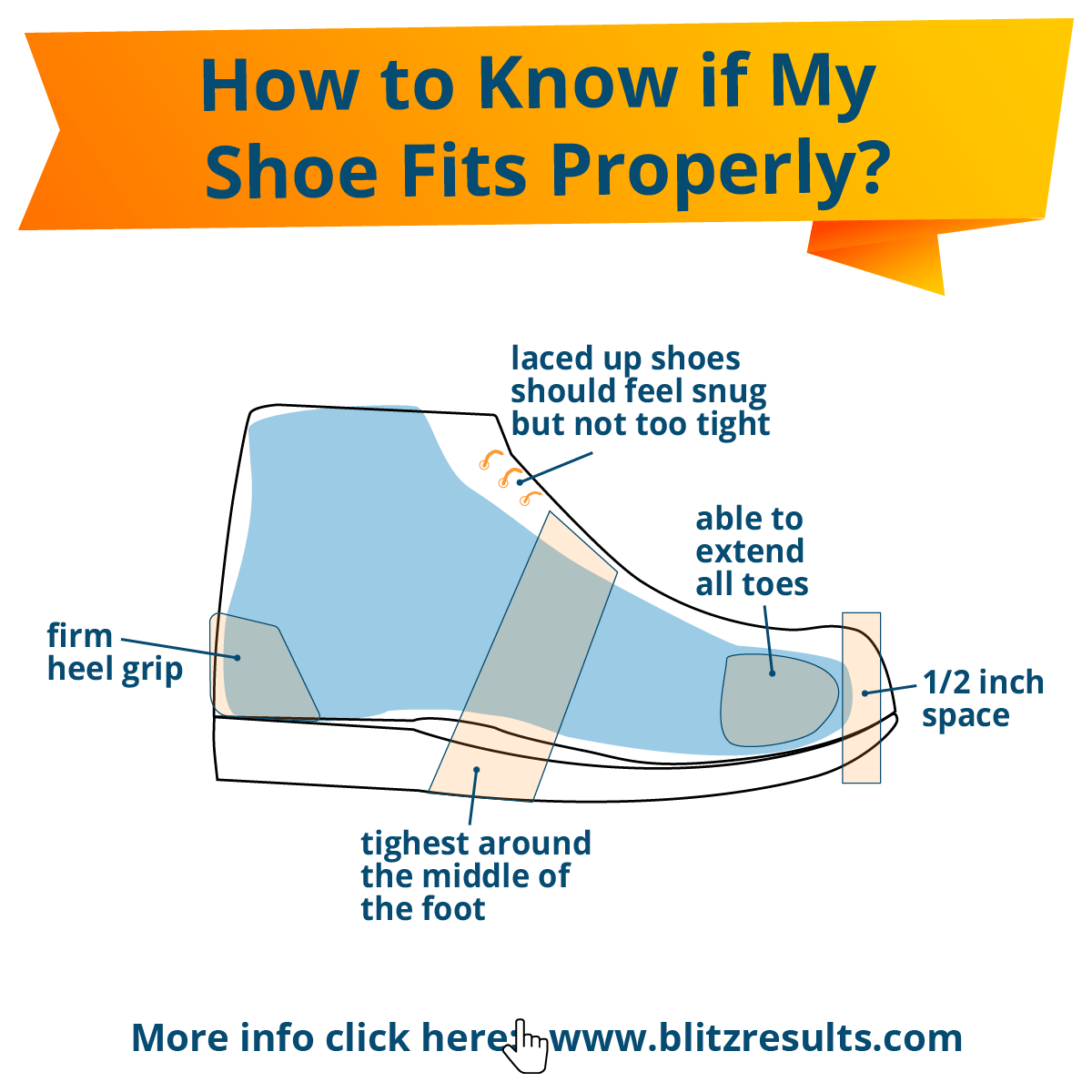
Check the front area: The front area is particularly important. If the footgear, in your usual size, is too tight in the front area, the instep may be insufficient. The leather usually yields slightly. But, of course, you should be able to take right off in your new shoes. There should be approximately one inch of space between your toes and the tip of your footwear.
Ball and heel: The shoe must sit firmly at the ball and heel. On the heel, you should have a minimum amount of slipping – footgear that rides up and down when you walk is too large. Especially with higher heels, the heel must not wiggle, otherwise, you are in danger of tipping over. A shoe that fits, holds the foot firmly, especially in the ball area, the widest part of the foot.
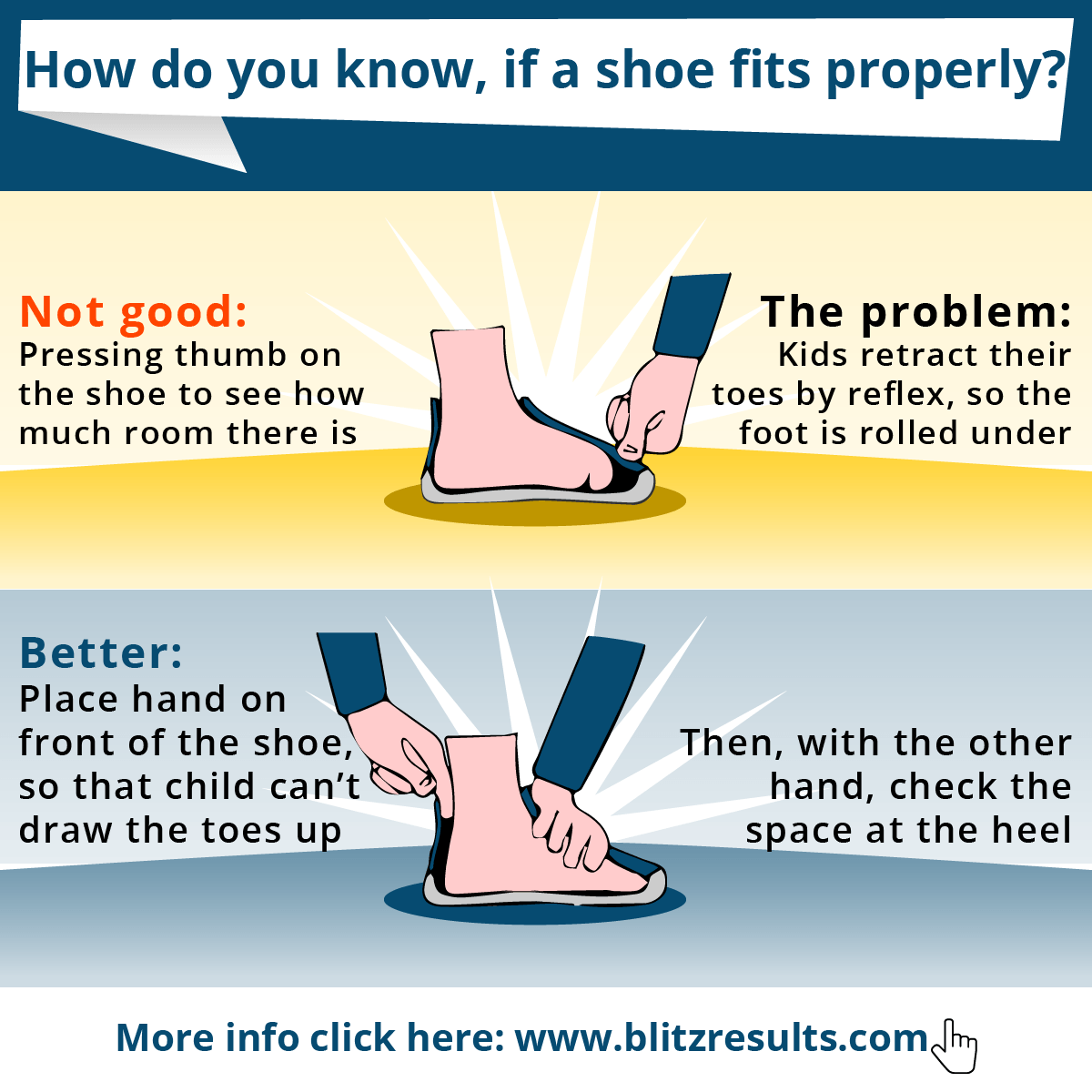
Don’t rely only on the “toe test” either – squeezing the tip of the shoe to see if there is room for your child’s toes. Kids tend to curl their toes when you do this, so you may get an inaccurate measurement.
Instead, grasp the front of the shoe, so your child can’t move their toes. Then, check the space at the back fo the heel with your other hand, to feel if there is enough room for your child’s foot to grow.
There should also be a small gap between the heel and the rear of the shoe. However, the heel should not move up and down too much – if it does, re-adjust the laces. If the heel still moves a lot, the shoe is too loose.
The perfect shoe fit
- Feet expand during the day. Go shopping in the afternoon or evening.
- If possible, wear regular socks. Extremely thick or thin pairs can alter the fit.
- Sizing system are only there as a guide. Even if you choose shoes in your correct number, they may not necessarily fit. Even footwear of the same brand may be different. Always test different sizes of your preferred model.
- Shoes are only comfortable if they fit properly. Take the time to find the right fit.
- Never buy footgear that “just about” fits.
- Always try on the left and the right shoe.
- Take your time having a look through the store. Use the stairs. Make sure that you have 0.5 to 1 inch of wiggle room when rolling your foot in the front part of the shoe. This rule does not apply to high-heeled shoes, in which case foot-slipping must be prevented by a firm support.
- In any case, test models from different manufacturers. Some brands are made wider or narrower. Correct width is just as important as length when it comes to optimal comfort. If your feet are narrow, go for a brand with a narrower fit, instead of a smaller shoe size.
- The materials used are also of great importance. Materials such as rubber, leather, artificial leather or fabric stretch in different ways over time. This also affects the fit.
- Women, in particular, often buy small shoes. The reason: false vanity and outdated beauty ideals. Some manufacturers react to this behavior and offer, for example, an actual shoe size 9 as a size 8 (vanity sizing).
How Much Toe Room Should You Have in Your Shoes?
Leave 1/2 inch at the front of the shoe, 1/8 inch at heel for normal shoes. Leave more space in running and hiking shoes (about a thumb’s width of space).
How Much Space Should a Child Have in Their Shoes?
Children’s shoes should fit well. Most parents act in an exemplary manner when buying children’s shoes and especially look for enough “wiggle room” for the toes in the shoe.
But did you know, however, that at least 0.5 – 0.7 inches (12 to 17 millimeters) should be added to foot length? That is how much space your child’s foot needs to be able to roll in the shoe while walking and running around.
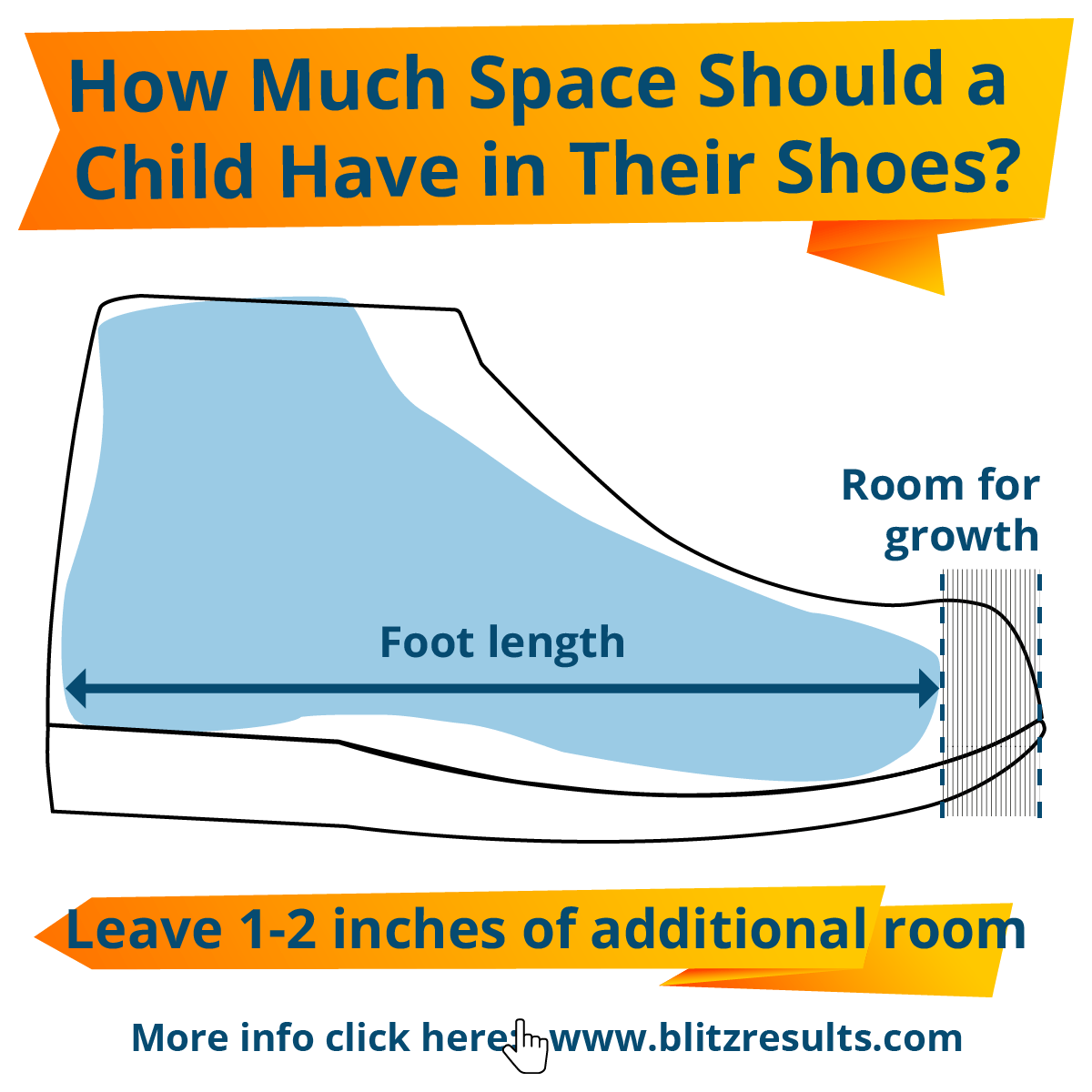
Shoe Measuring Device for Kids (Brannock)
Many parents hold the shoe sole up to the child’s foot to estimate the size. But the length on the inside of the shoe can’t be estimated from the outside and is often much shorter than you’d expect (lining, seams, footbed). It’s far better to use an appropriate measuring instrument like the Brannock Device.
Charles F. Brannock developed a measurement tool to get the length, width, and arch length of the human foot easily. The Brannock Device has a left and right heel cup to measure both feet. Since its invention, the Brannock Device is an international standard of the footwear industry and used in every good shoe shop.
If there are no specialist shops in your area and you prefer to buy online, an investment in a Brannock Device and inner shoe measuring instrument might be a good alternative. Price for Brannock Devices start at 25 USD (used, on ebay or craigslist) or new at 60 USD.
How to use a Brannock Device?
Stand on the Brannock Device. Press heel firmly against the rear cup. Stretch out toes and measure length of foot. Use the diagonal width line to measure the width of the foot. Repeat procedure with other foot and go for the longer/wider shoe size.
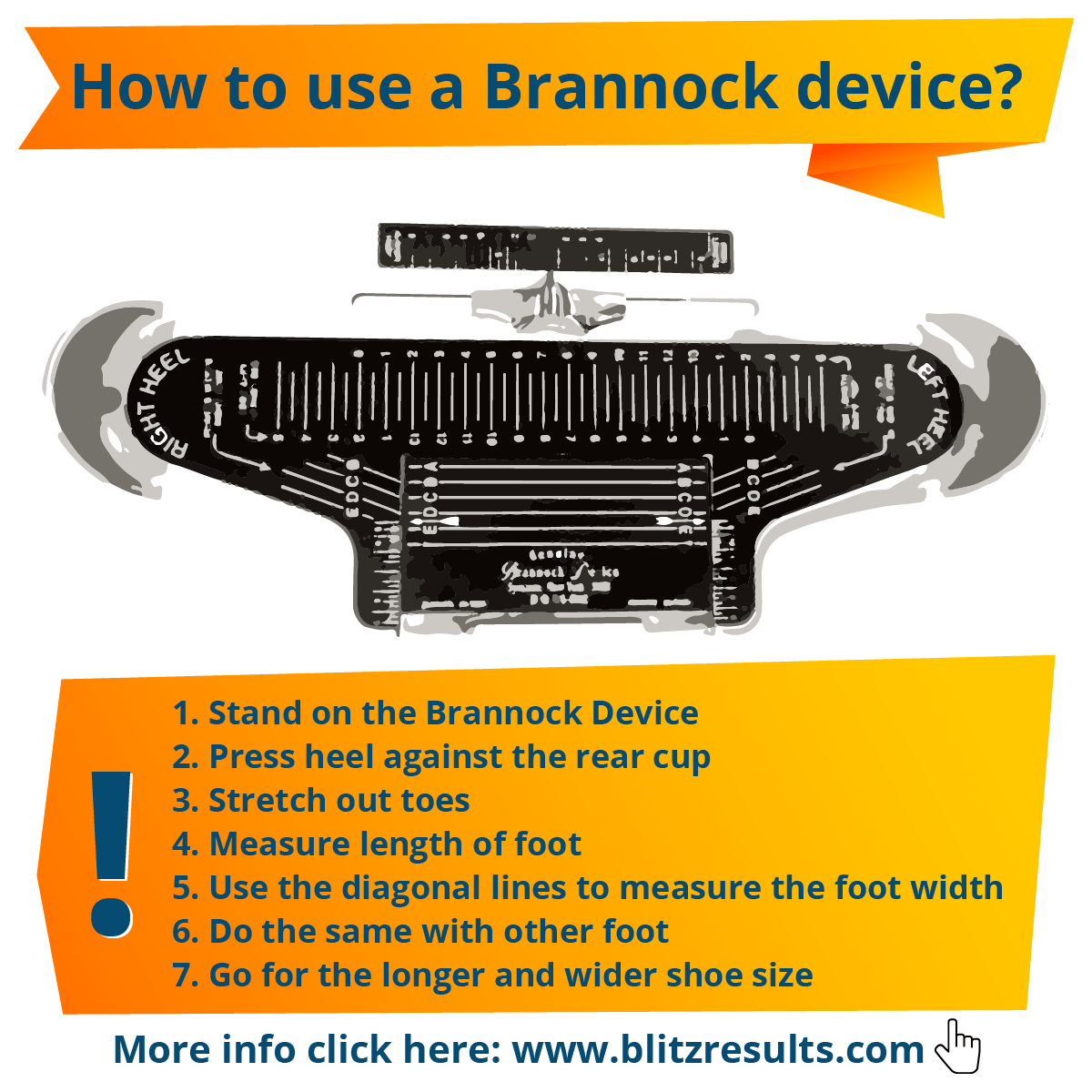
Be measured to your child’s foot
Don’t shop by size alone. Children’s feet are softer and less sensitive than adults’, so poorly fitting shoes won’t necessarily bother them. Always shoe shop with your child present, so they can have their feet measured at the shoe store by a professional to get a truly accurate fit. (Just make sure they are wearing the socks or pantyhose they intend to wear with the shoes they are trying on!)
What does the American Podiatric Medical Association (APMA) recommend?
The APMA has a quick three question test to help you determine if your child’s shoe/baby walking shoes “makes the grade”:
- Does the shoe have a stiff heel? The shoe shouldn’t collapse when you press on both sides of the heel counter.
- Is the toe flexible? The shoe shouldn’t be too stiff in the toe area, but it shouldn’t fold up too much when pressed either.
- Does the shoe have a rigid middle? The shoe shouldn’t twist in the middle.

Insights from our Lab
This is how we work: watch the video and see how we measure and research in our lab.
- 1 How to Measure Your Shoe Size and Width at Home
- 2 How to Measure Kids Feet
- 3 How to Measure Baby Shoe Sizes
- 4 How do I know if a shoe fits?
- 5 Shoe Measuring Device for Kids (Brannock)
- 6 How to use a Brannock Device?
- 7 Be measured to your child’s foot
- 8 What does the American Podiatric Medical Association (APMA) recommend?
- 9 Insights from our Lab
